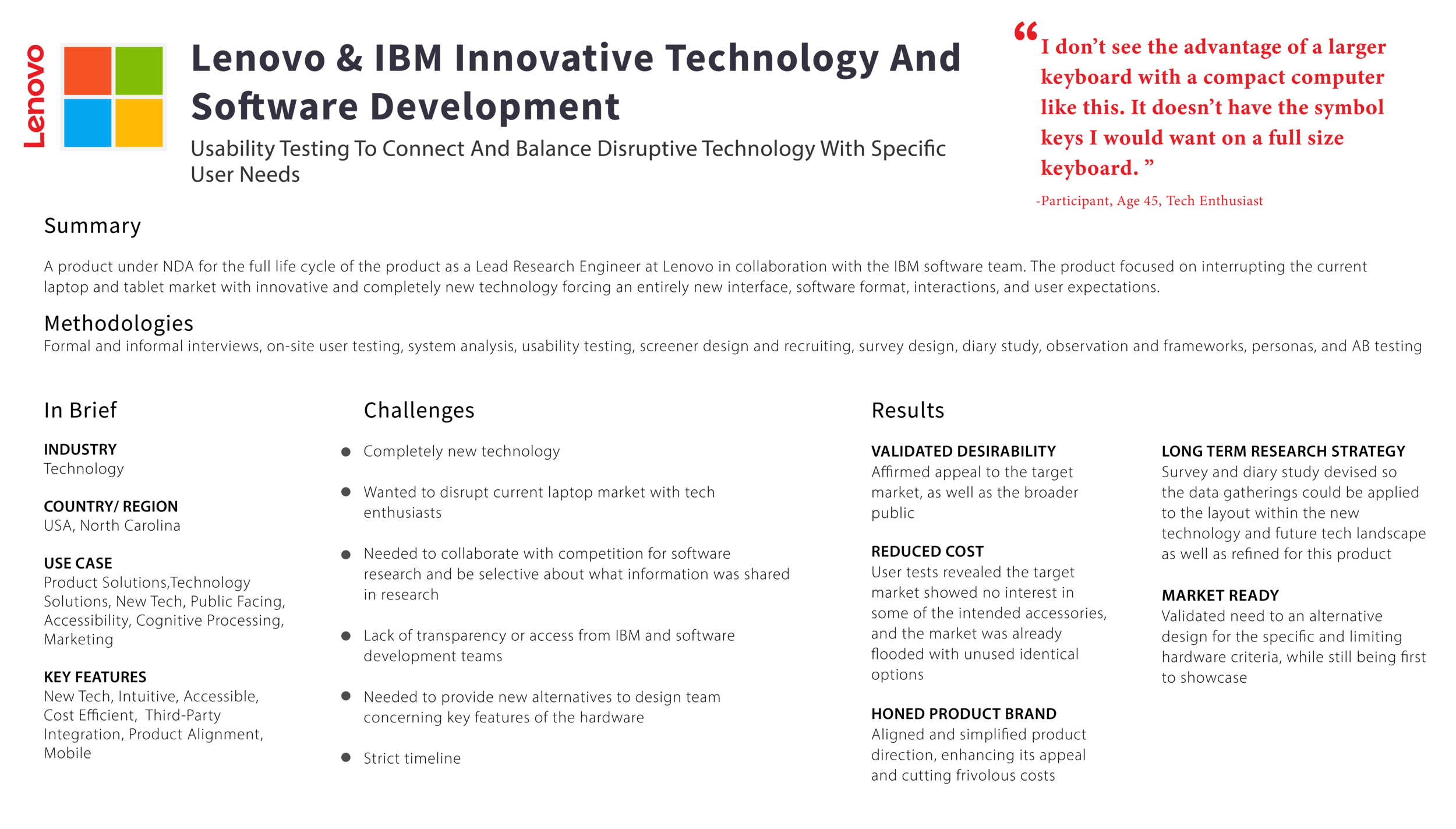NDA Project Summaries
Each company I have the pleasure of working with provides me with valuable understanding, perspective, and experience. Most of my professional experience involves non-disclosure agreements, making visual references unavailable. To offer more insight into my experience I provide high level summaries of each project. Each summary is followed with what I learned within my role as a researcher and designer.
I Learned...
Product management for a project on a tight deadline.
The importance of reading about company initiatives and what other departments are up to.
In a company as large as Blue Cross everyone is an expert in something, or knows who is and this will help connect dots fast.
I Learned...
How to be discrete and selective about information needed to make a product excellent when collaborating with competition.
Planning, managing, executing, and synthesizing a large study in a very short period of time, and doing this for the full life cycle of a product has its challenges, but is a blast.
Global, multi-lingual teams are fun, thrilling, and full of surprises.
On-boarding can cut stress loads in half, and takes only about a week if done well.
I Learned...
We know more together. Get everyone in on a project as early as possible, especially if the product is as old as dirt.
Be present. Bad ideas lead to good ones usually. Insight is everywhere.
Design for motivation changes, not just goals.
Sensory psychology is a radical tool.
Pay attention to participant kerfuffles. They lead to insights.
I Learned...
Mothers are resilient, remarkable, and have too high a tolerance for b.s.
Rapport is the most important thing in interviews, and it’s the easiest part. All it takes is empathy and curiosity.
Some experiences leave users daunted. Giving participants a specific scenario to work within enables them to access their memories more readily and speak to their own needs with more confidence.
The more restrictions, the easier the strategy, because the system is already in place and the criteria is set, but then it can be harder to innovate effectively.



